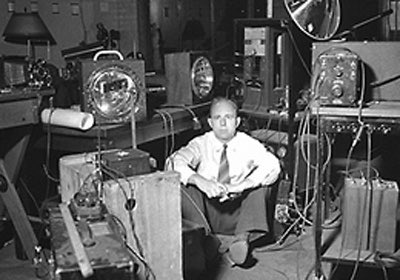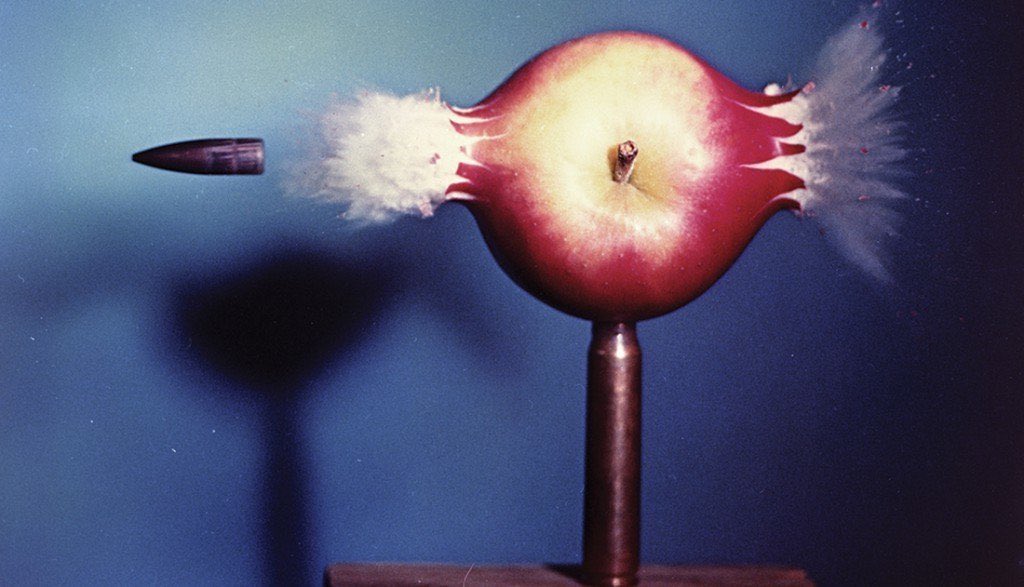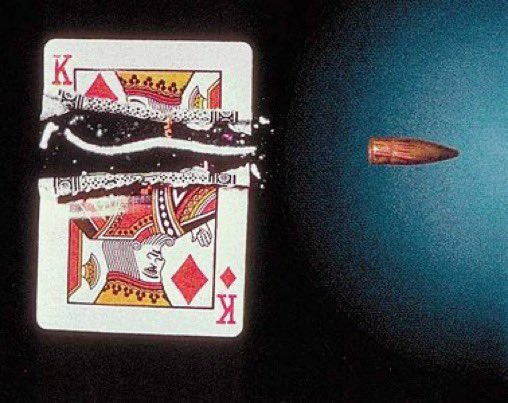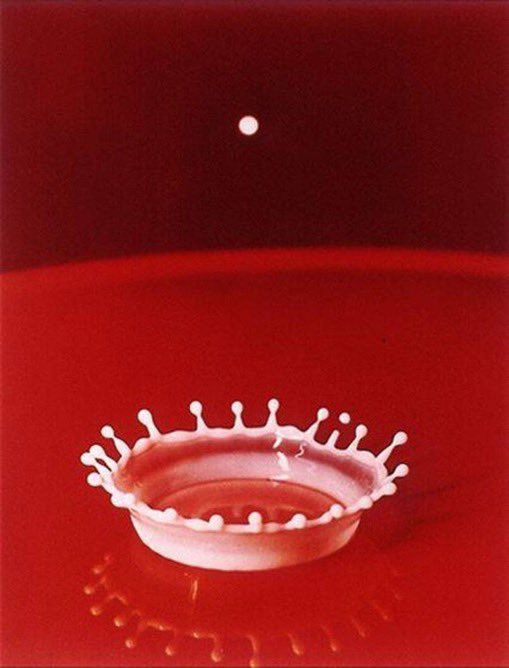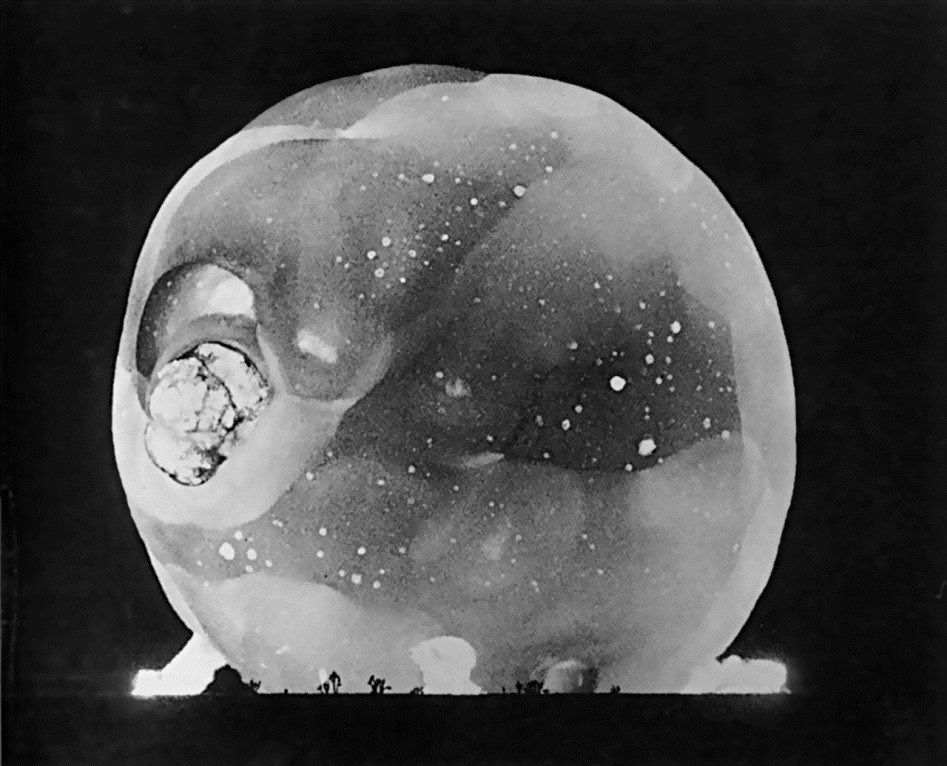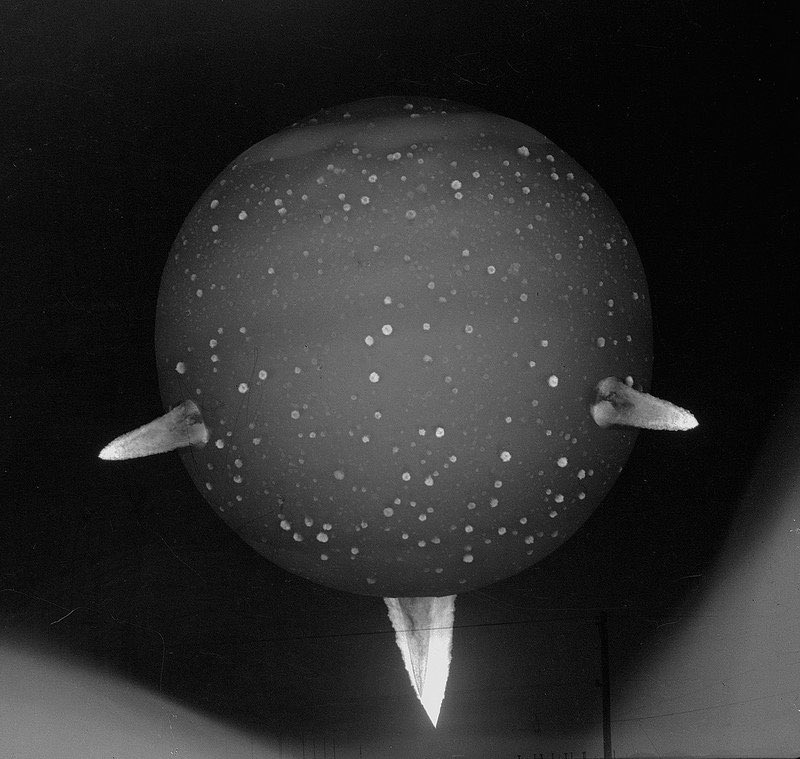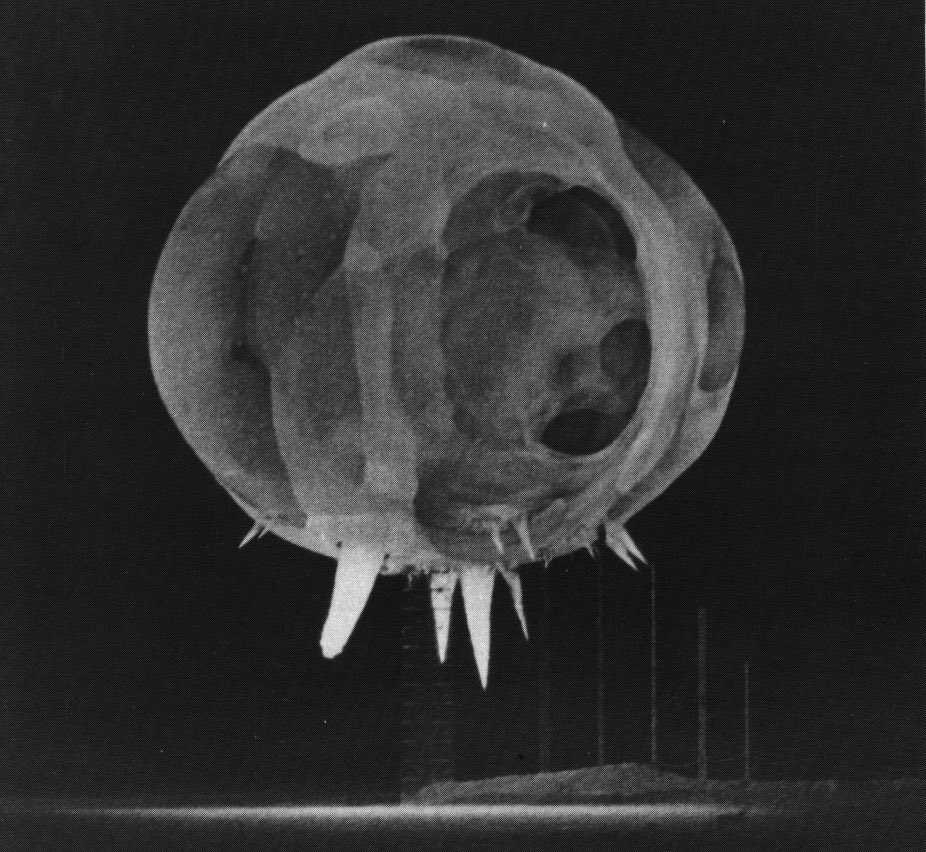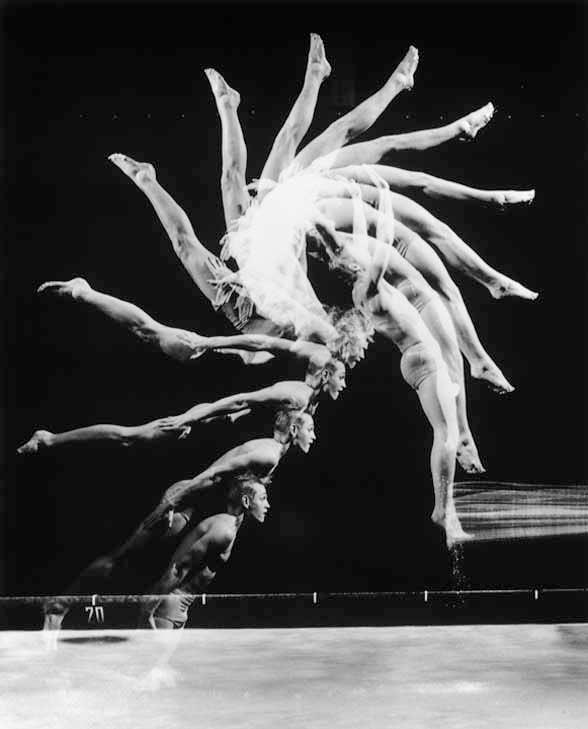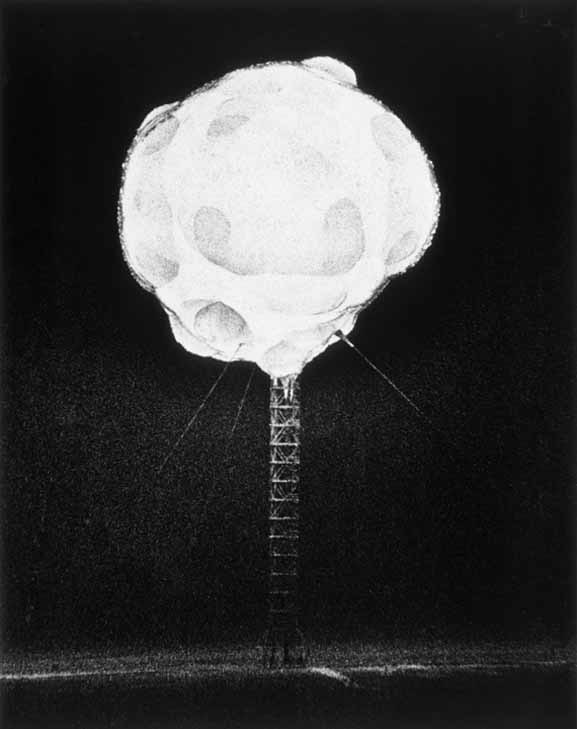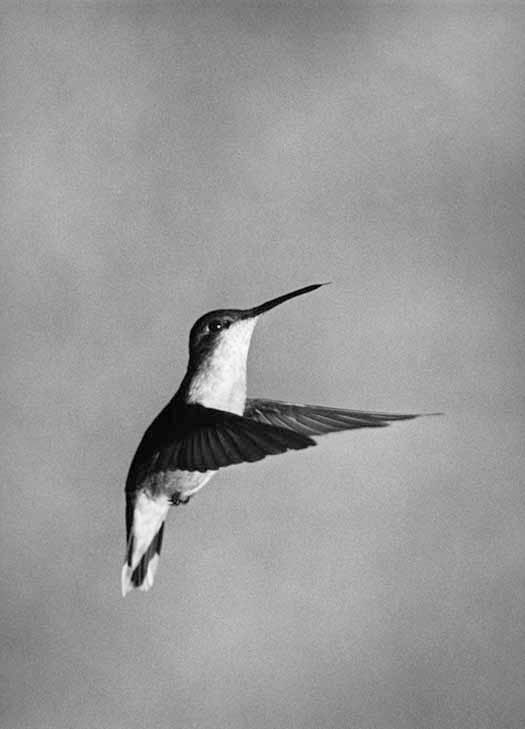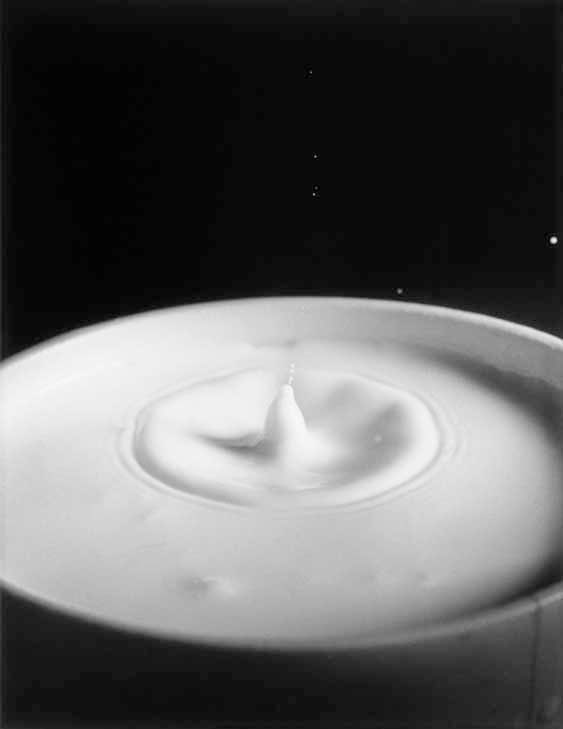The engineer and photographer Harold Edgerton was born #OTD in 1903. He pioneered various forms of high-speed photography using specialized cameras, strobe lighting, and other techniques. You’ve seen his work!
Images: MIT; H. Edgerton
Images: MIT; H. Edgerton
While working at EG&G, Edgerton and his colleagues developed the “Rapatronic” camera. Its shutter had no moving parts and could capture exposures as short as 2 microseconds. This allowed for high speed photos of atomic bomb tests. (Notice the Joshua trees in silhouette.)
What’s going on in these photos? The roughly spherical blob is the shockwave from the blast, and the white splotches are bits of bomb casing catching up with it. What about the protrusions emerging from the sides of the blast?
Image: Public Domain
Image: Public Domain
In these tests, the bomb sat at the top of a support tower (which you can see if you zoom in) and was held in place with steel mooring cables. Those glowing protrusions are the cables vaporizing. The phenomenon was dubbed the “rope trick effect.”
Image: Public Domain
Image: Public Domain
You can see the rope trick effect in this fascinating (though definitely unnerving) footage of various bomb tests. https://www.youtube.com/watch?v=KQp1ox-SdRI">https://www.youtube.com/watch...
Loads more photos by Edgerton here.
Images: H. Edgerton, MIT
http://edgerton-digital-collections.org/galleries/iconic">https://edgerton-digital-collections.org/galleries...
Images: H. Edgerton, MIT
http://edgerton-digital-collections.org/galleries/iconic">https://edgerton-digital-collections.org/galleries...

 Read on Twitter
Read on Twitter